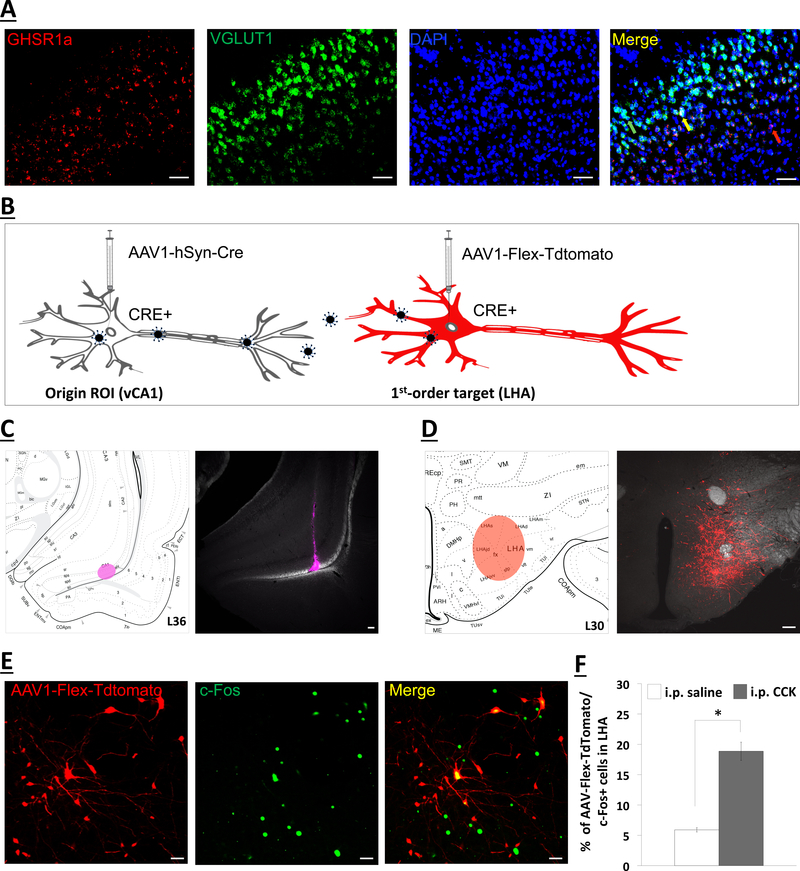Figure 3.
(a) Representative images show GHSR1a mRNA (red) and VGLUT1 mRNA (green) expression in vCA1 cell bodies (DAPI nuclear stain; blue) (n=3). A representative red arrow depicts GHSR1a mRNA that is not vGLUT1; green arrow for vGLUT1 mRNA that is not GHSR1a; yellow arrow for vGLUT1/GHSR1a+ mRNA. Scale bar: 50μm. (b) Schematic illustration of Cre-mediated anterograde tracing method (51). The AAV2/1-hSyn-Cre drives Cre expression in origin region of interest (ROI) infected at the injection site (left), as well as in first-order (but not second-order) neurons based on virion release from first-order axon terminals. The AAV-Flex-Tdtomato, a Cre-dependent anterograde tracer, will express red fluorescence in Cre+ neurons, including first-order neurons (right). (c) Right panel shows an ipsilateral and unilateral 200nl pressure vCA1 co-injection site of AAV-hSyn-Cre and CTB (far red) (n=5). Left panel shows schematic representative injection site in vCA1 HPC. (d) Right panel shows an ipsilateral and unilateral 200nl pressure injection site of a Cre-dependent anterograde tracer (red; AAV1-Flex-Tdtomato) in the lateral hypothalamic area (LHA). Left panel shows schematic representative injection site in LHA. Scale bar: 100μm. (e) Intraperitoneal injections of CCK (n=3) increases the percentage of AAV-Flex-TdTomato cells that colocalize with c-Fos positive immunoreactive cells in the LHA vs. saline (n=2). (f) Representative images of immunohistochemical staining of peripheral-CCK induced c-Fos protein (green) colocalize with neurons in the LHA that receive direct input from the vCA1 (red; AAV1-Flex-Tdtomato). Scale bar: 25μm. Data are mean 507 ± SEM; *p<0.05 vs saline treatment. i.p.: intraperitoneal; CCK: cholecystokinin; GHSR1a: type 1a growth hormone secretagogue receptor.

